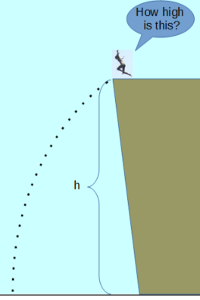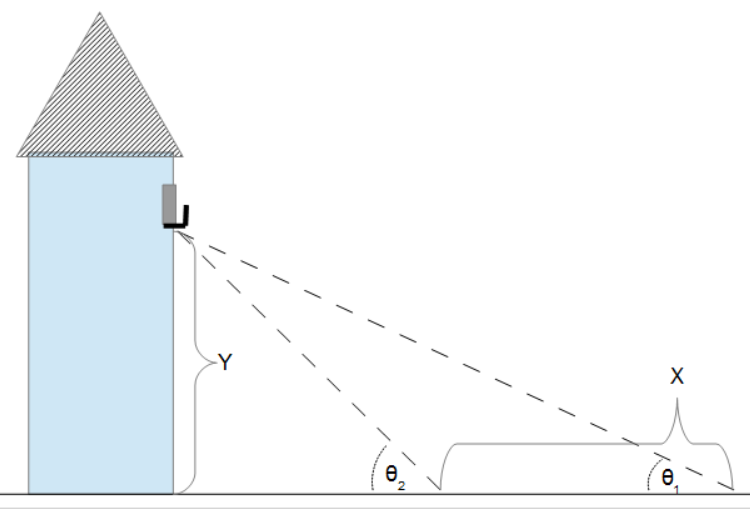The Free Fall (Energy on Impact) calculator computes the kinetic energy associated with an object at final velocity after a free fall based on the mass, height and the acceleration due to gravity.
INSTRUCTIONS: Choose units and enter the following:
- (h) Height of Free Fall
- (m) Mass of Object
Kinetic Energy of Free Fall Final Velocity (KE): The calculator returns the kinetic energy in Joules. However this can be automatically converted to compatible units via the pull-down menu.
The Math / Science
The Final Velocity of Free Fall equation is meant for the context of free fall, or constant acceleration downwards due to Earth's gravity without rest, ignoring air resistance. Here, vf is the final velocity of fall a given distance (Height) with it's acceleration of g (the acceleration at sea level due to gravity, roughly 9.80665 m/s^2).
The formula for Kinetic Energy at Final Velocity is:
`KE = 1/2*m*2*g*h`
where:
- KE = Kinetic Energy at Final Velocity
- m = Mass of Object
- h = Height of Free Fall
NOTE: This assumes no drag and constant acceleration due to gravity.
The formula for the final velocity of free fall is:
`v_f = sqrt(2·g·h)`
where:
- vf is the velocity at impact of a free fall
- h is the height of the free fall
- g is the acceleration due to gravity
The formula for kinetic energy is:
where:
- KE = Kinetic Energy
- m = mass of object in free fall
- vf = velocity at impact
 Free Fall Calculators
Free Fall Calculators
- Free Fall (time): Computes the duration of time that an object will be in free fall based on the height and the acceleration due to gravity.
- Free Fall (distance): Computes the distance that an object will be in free fall based on the duration of the fall and the acceleration due to gravity.
- Free Fall (Velocity at Impact): Computes the final velocity of an object after a free fall based on the height and the acceleration due to gravity.
- Free Fall (Energy on Impact): Computes the kinetic energy at impact based on the height of free fall, acceleration due to gravity and the mass of the object.
- Model Rocket Altitude: Computes the estimated maximum altitude of a rocket based the distance from the launch point and the angle to top point of flight (zenith).
- Object Height by Time to Drop: Estimates the height of an object based on the time it takes for an object to drop from the top of it.
- Elevation of Object (angles and separation): Computes the height of an object based on two angle measurements and the distance between them.
- Distance Traveled at Constant Acceleration: Computes the distance traveled by an object after a period of time, based on its initial distance from the origin, initial velocity and a constant acceleration.
- g (acceleration due to gravity at sea level): Acceleration due to Gravity (g) at sea level on Earth is 9.80665 m/s2.

